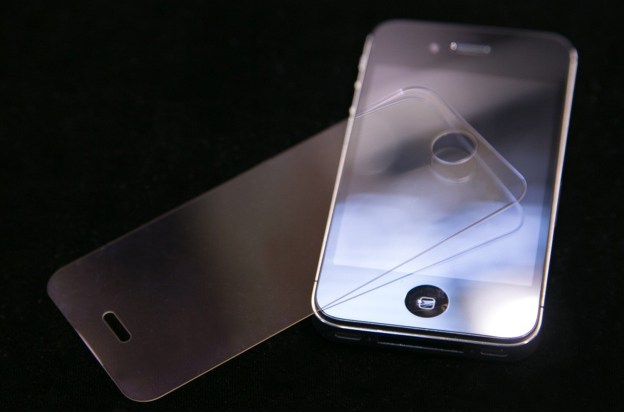
Corning’s Gorilla Glass has long been considered to be the strongest and most protective glass cover for our mobile phone screens, but recently, sapphire has emerged as the “dream” material which will put an end to scratched, cracked and shattered displays. Corning, which doesn’t make sapphire screens, has published an article which hits back at this belief, saying its new Gorilla Glass 3 does everything sapphire does, and more.
Jeffrey Evenson, one of the company’s senior vice presidents, attacks the notion that sapphire is the, “Obvious solution,” for strengthened display coverings. He says, “What would people say if a cover was invented that was about half the weight, used 99 percent less energy to make, provided brighter displays, and cost less than a tenth of sapphire?” He continues, “It so happens that Corning has already invented that cover, and it’s called Gorilla Glass.” While sapphire is harder to scratch than Gorilla Glass,
Corning says it is 67 percent heavier per unit volume, more difficult to process the thinner it gets, and, “Transmits about six percentage points less light and may produce optical distortions.” He also claims Gorilla Glass can withstand three times the force needed to break sapphire, and both panes had similar levels of wear and tear after tests.

Another VP, James Steiner, who manages Corning’s Specialty Materials division, comments on sapphire’s green credentials. “Sapphire’s cost and environmental hit are huge issues,” he is quoted as saying, before adding that Gorilla Glass, “Can be recycled using standard programs.”
Corning isn’t always so forthcoming on sapphire’s abilities
During Mobile World Congress, we caught up with GT Advanced, a company which manufacturers sapphire products, which was keen to promote sapphire as the next big thing in mobile screen tech. Mobile editor Jeffrey Van Camp tested out a sapphire screen against one made from Gorilla Glass and wrote, “I was easily able to scratch the Gorilla Glass, and shatter it, but couldn’t make a mark on the sapphire.” Interestingly, GT Advanced stated its panels were three times stronger than Gorilla Glass. We approached Corning for comment at the show, but were told no representatives were available to discuss the differences.
Gorilla Glass 3, Corning’s latest version, made its debut at CES 2013 and has subsequently been installed on the Samsung Galaxy S4, and will shortly appear on the Asus Zenbook Infinity Ultrabook. Corning says it has something called Native Damage Resistance and is even more resistant to scratches than before. Future versions of Gorilla Glass are being worked on which will improve screen performance in direct sunlight, and add an antimicrobial layer to kill germs and bacteria.
Sapphire screens are currently used by Vertu on its luxury phones such as the Vertu TI, however it’s usually found covering the faces of luxury watches. Corning does produce sapphire products, but primarily for the military. In an effort to prove Gorilla Glass can match and exceed sapphire glass’s toughness, Corning has produced the very brief video you can see below.




